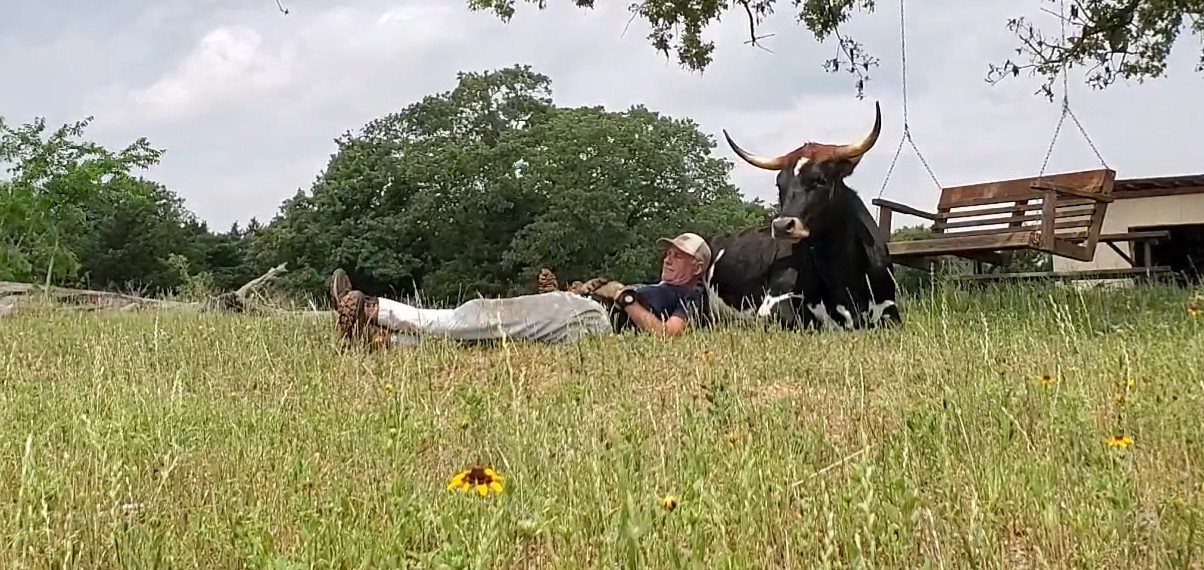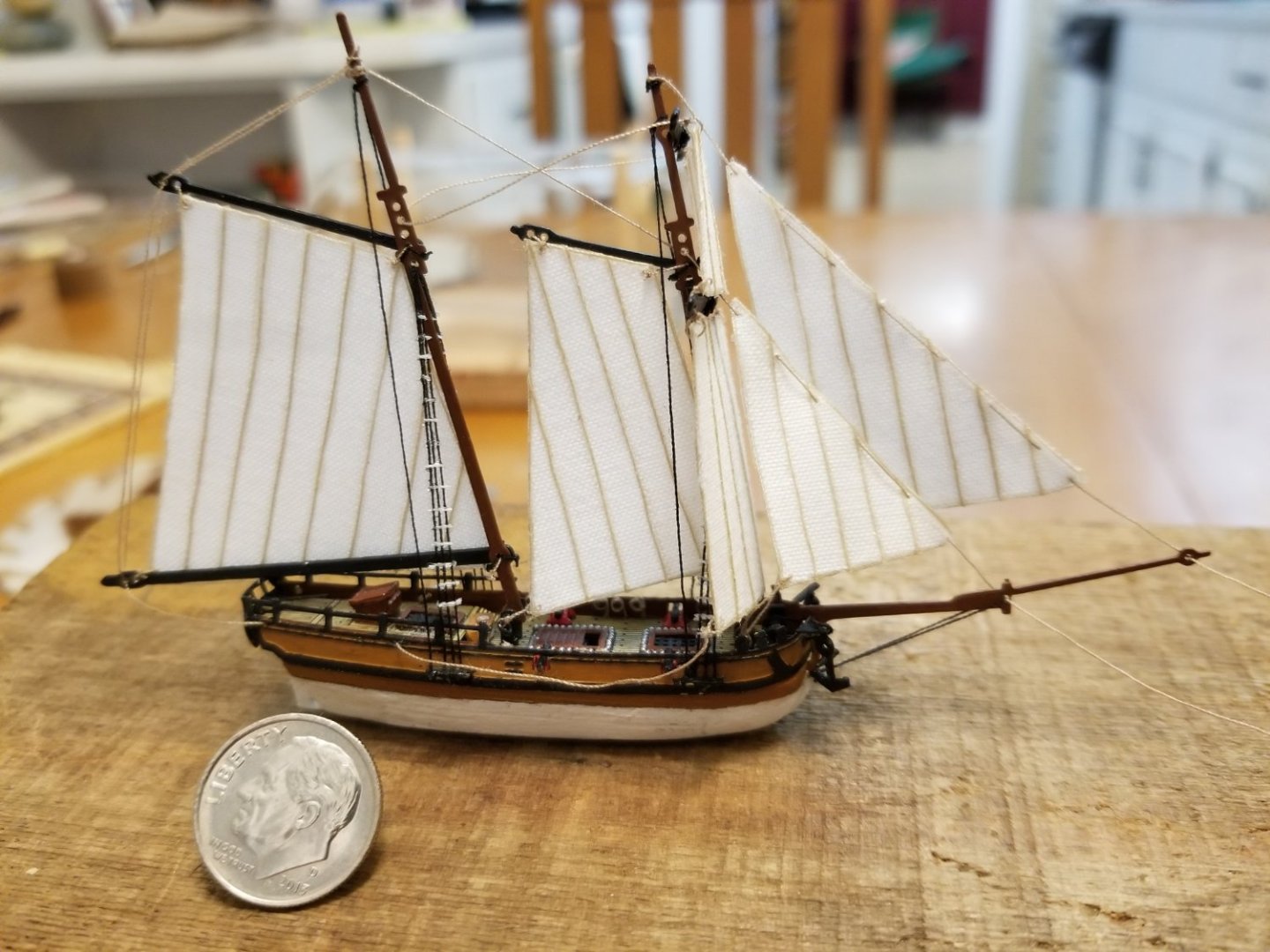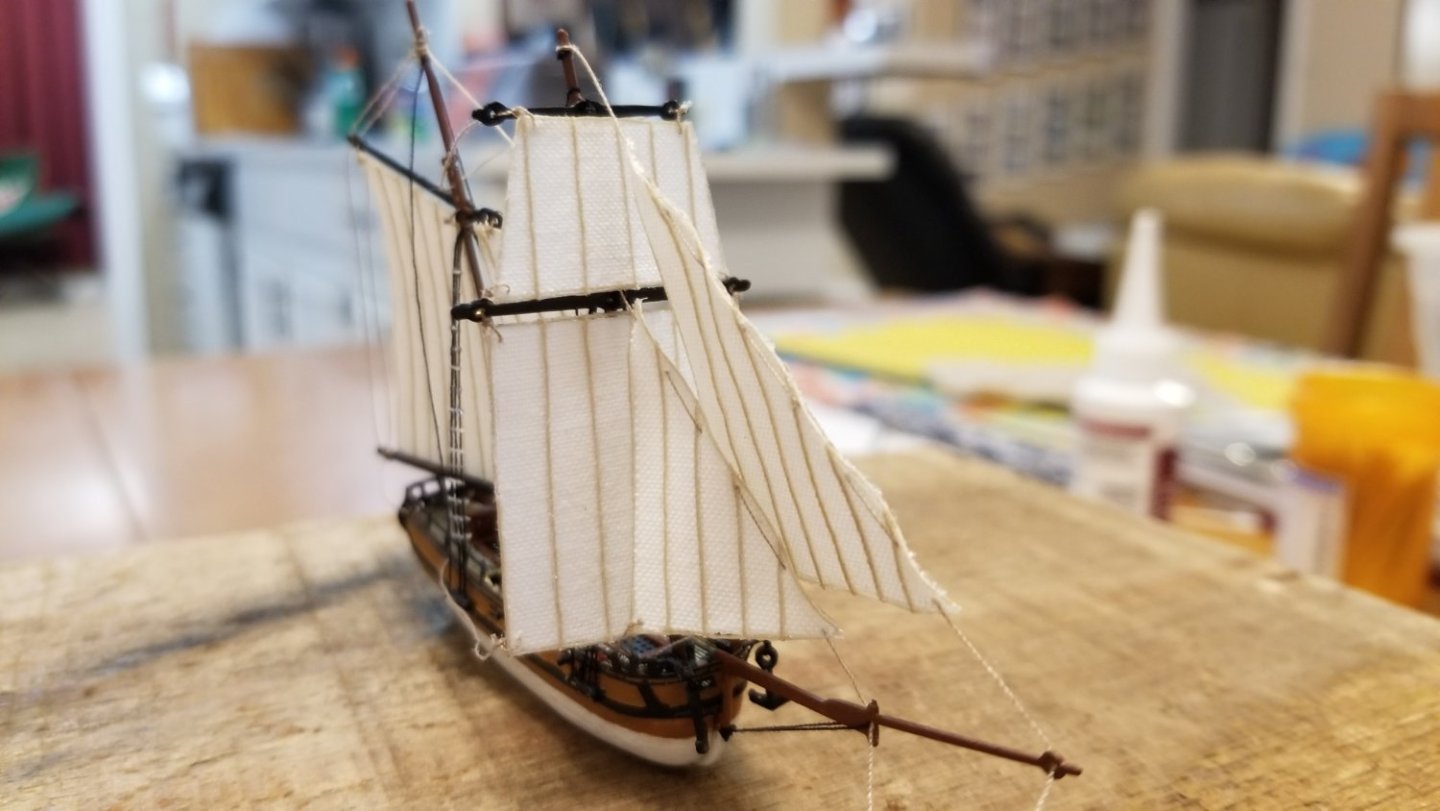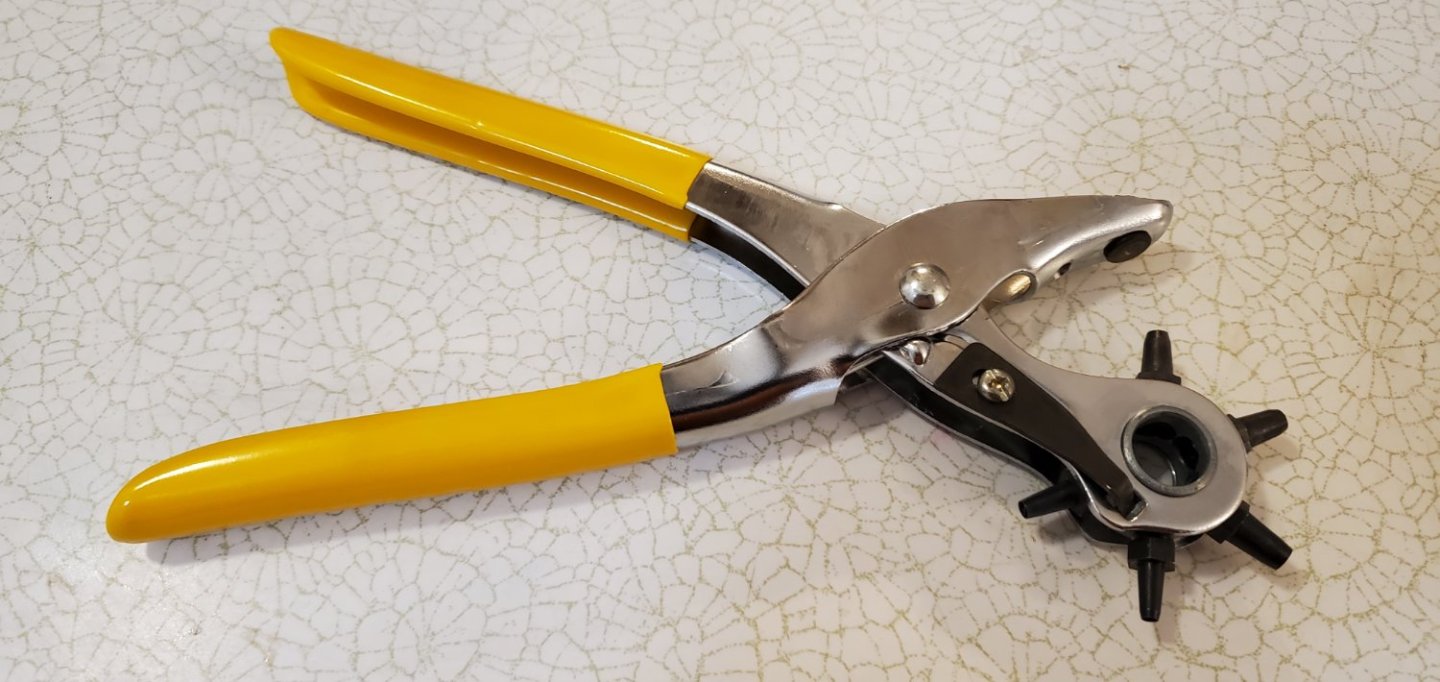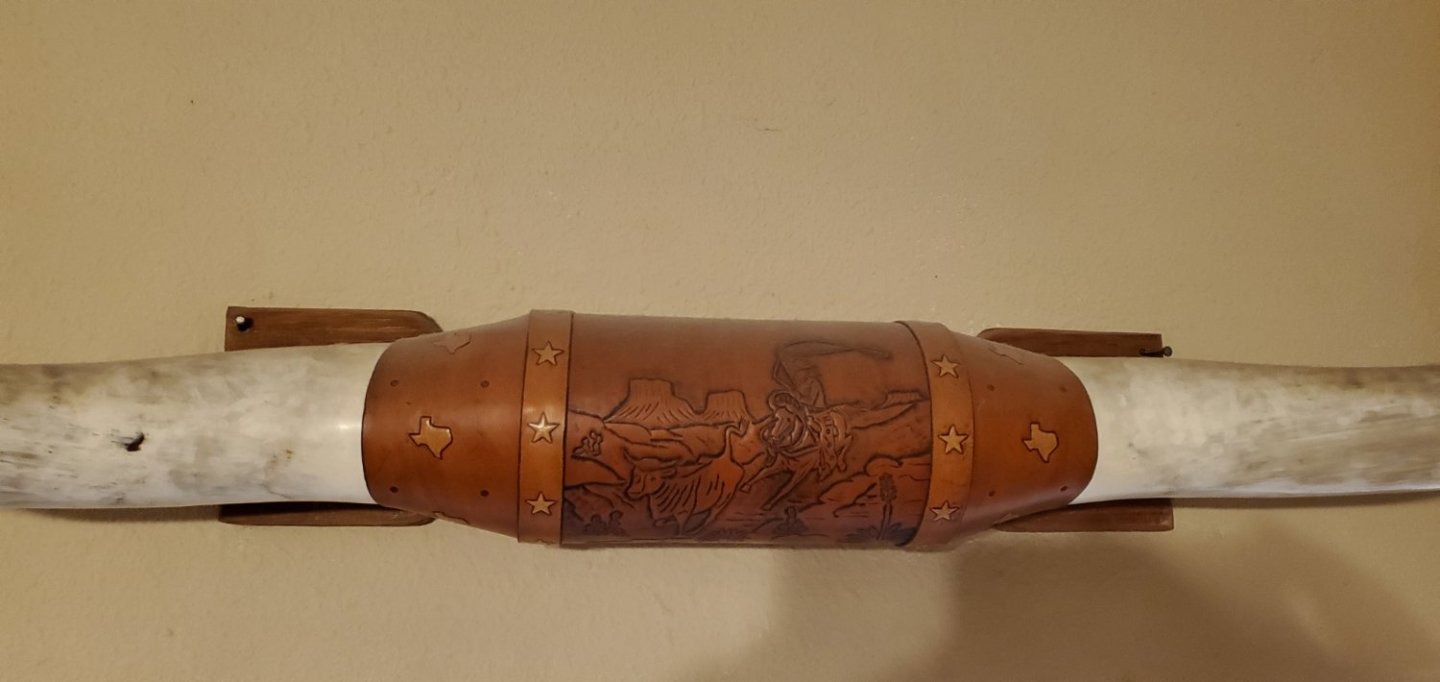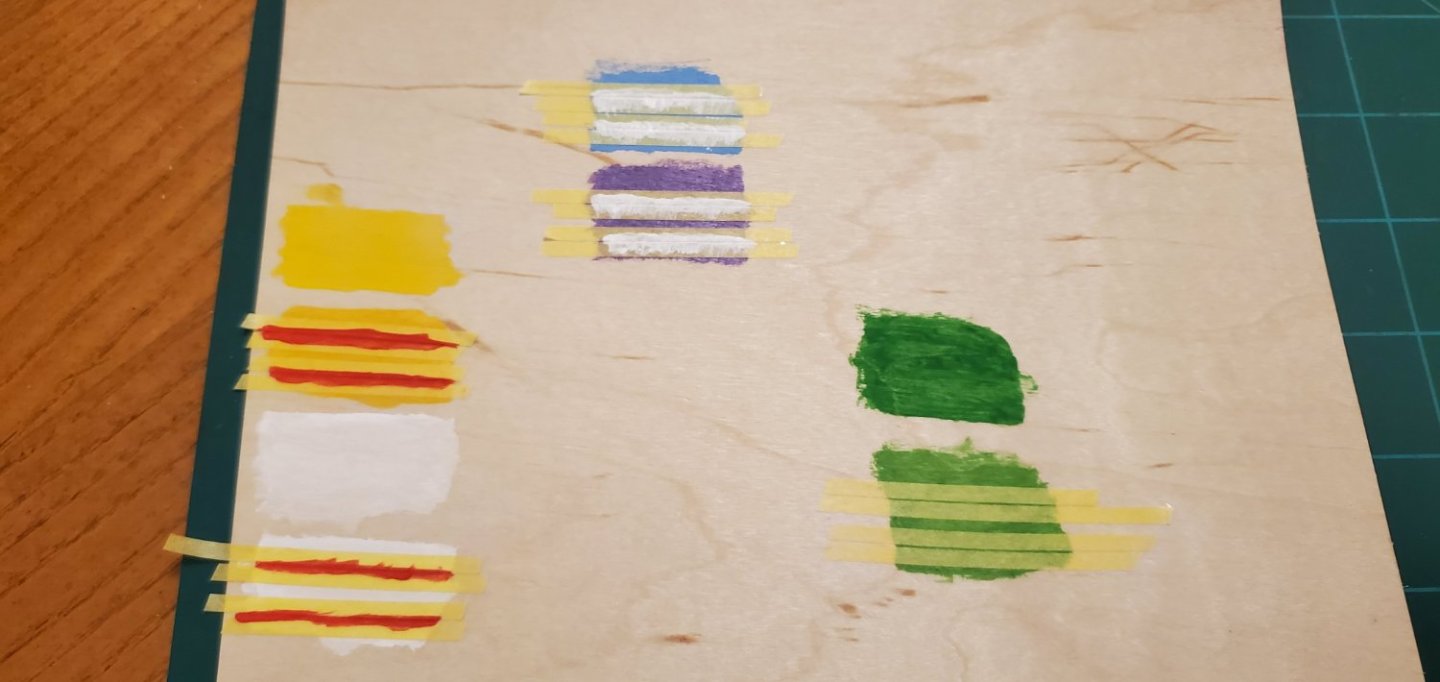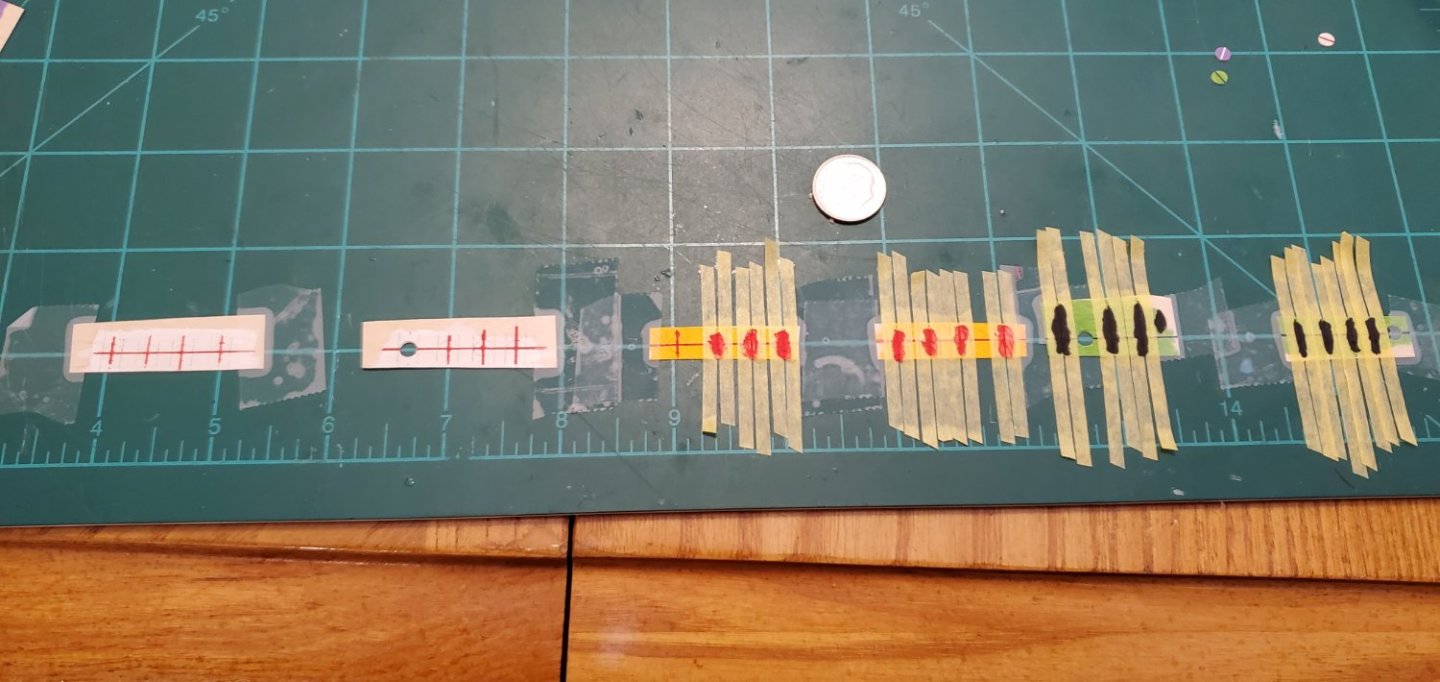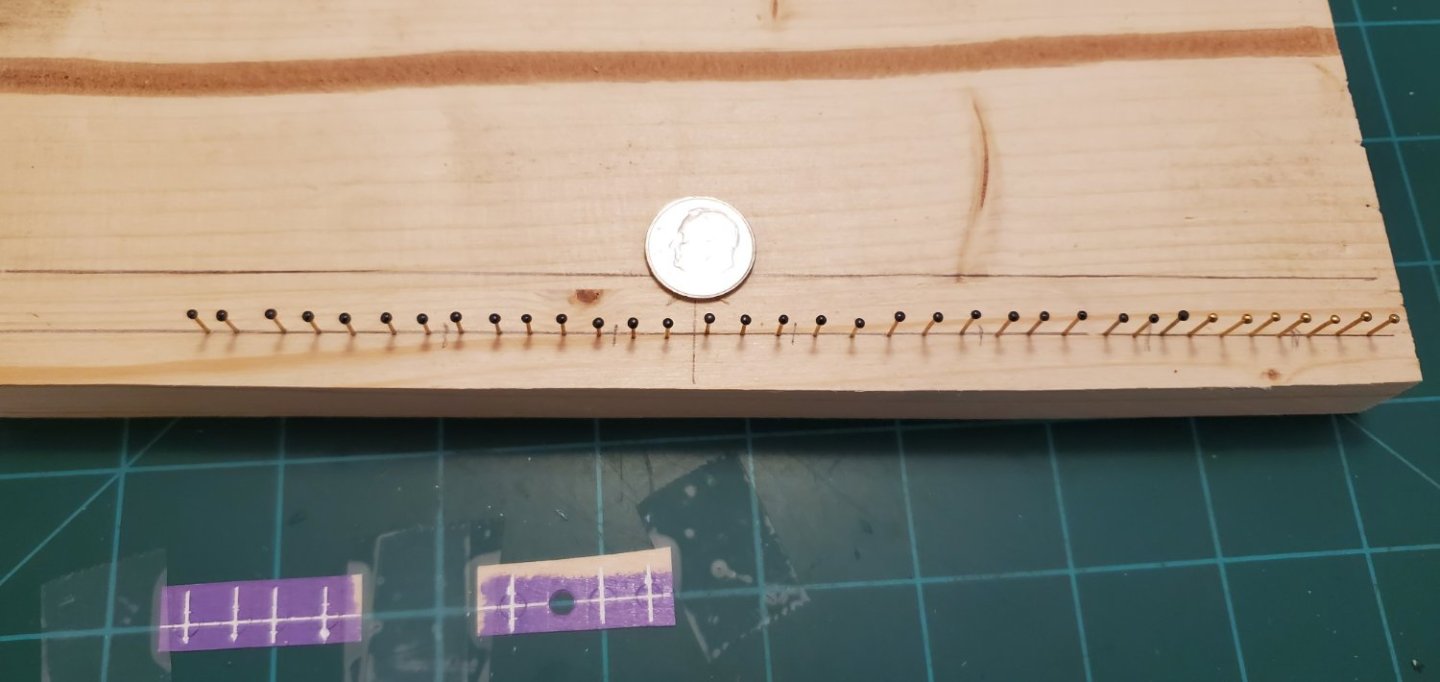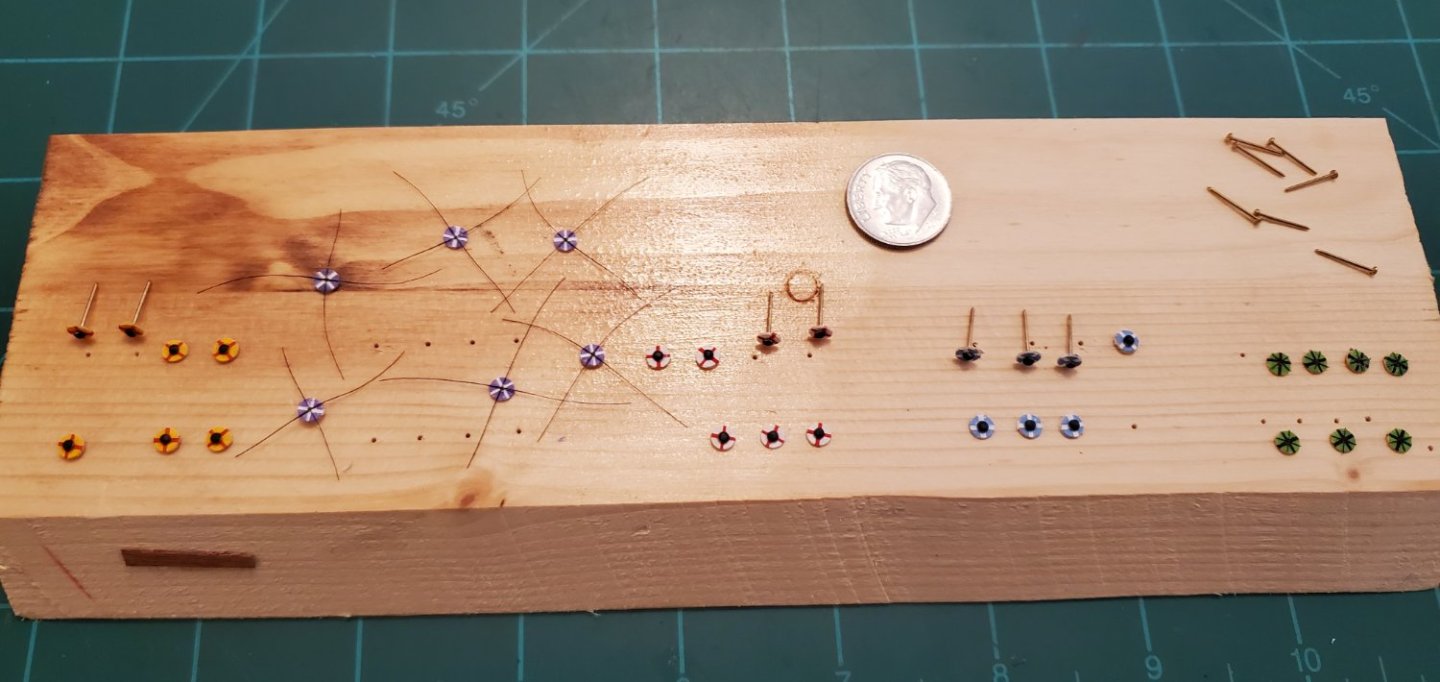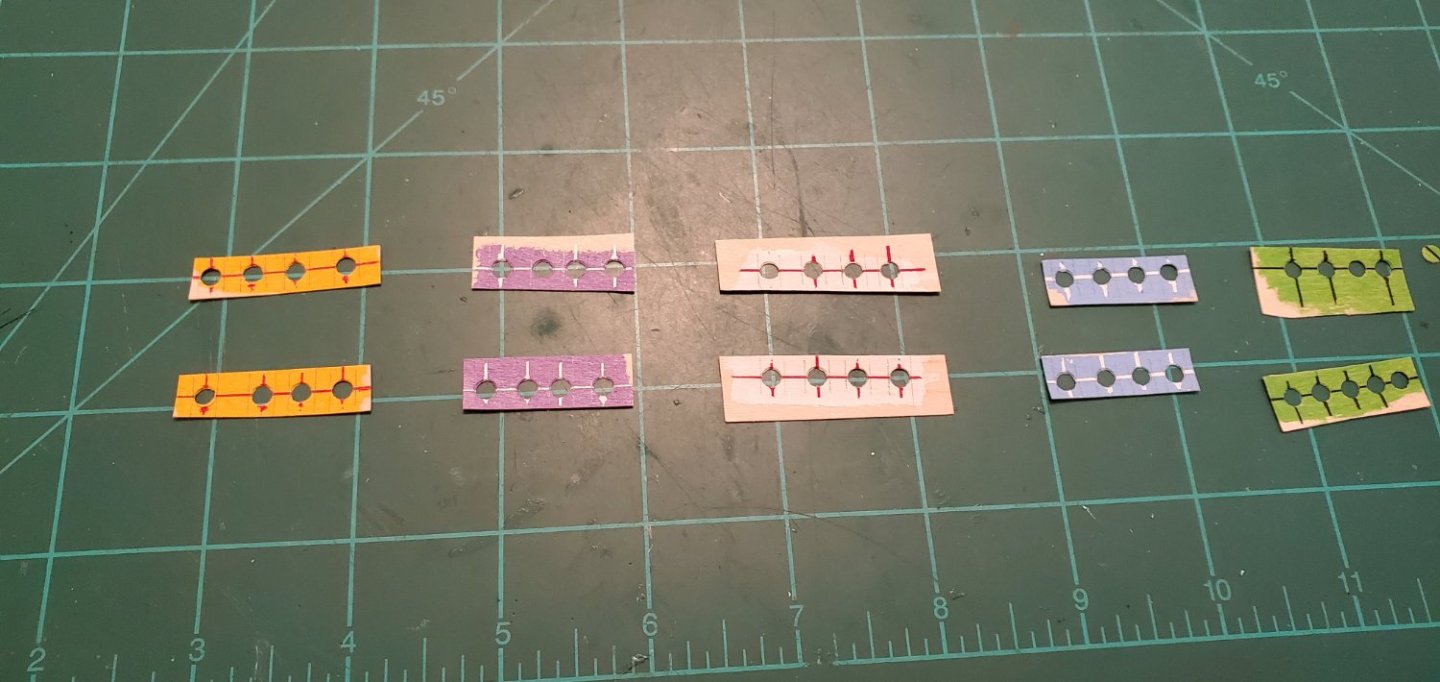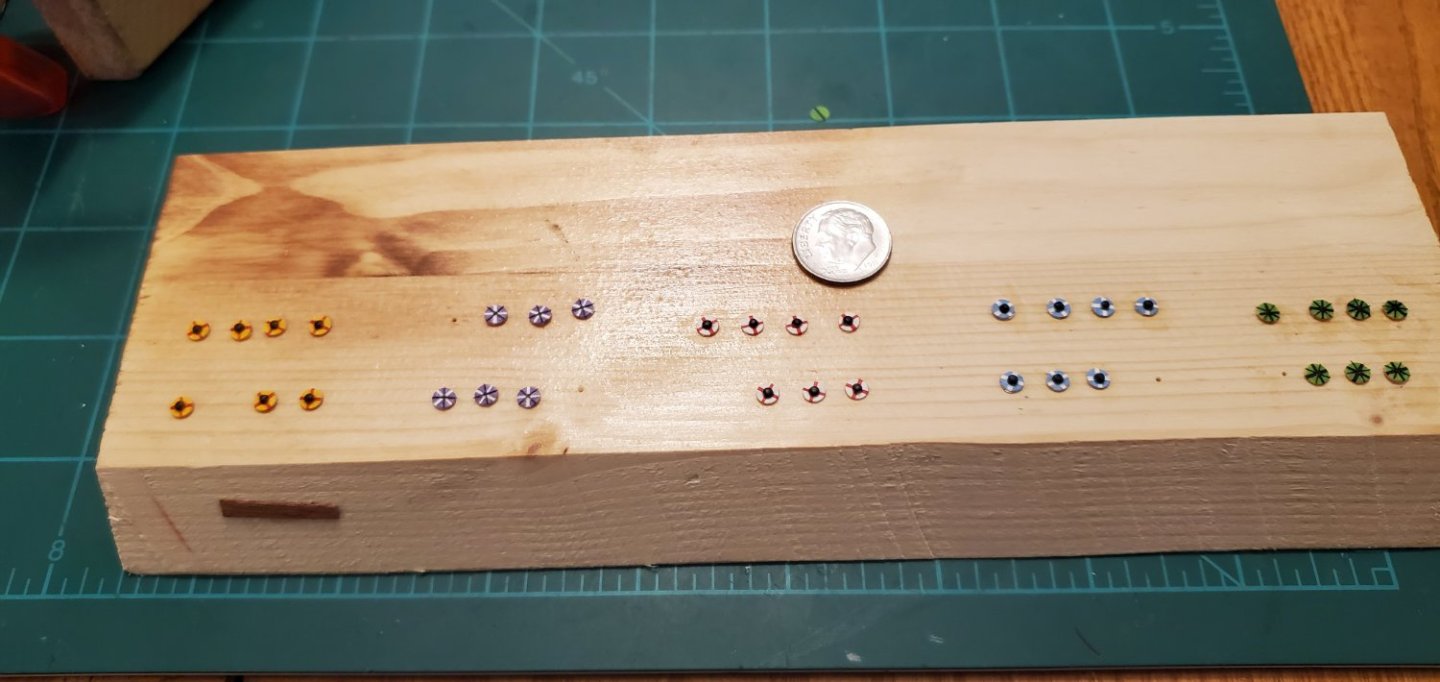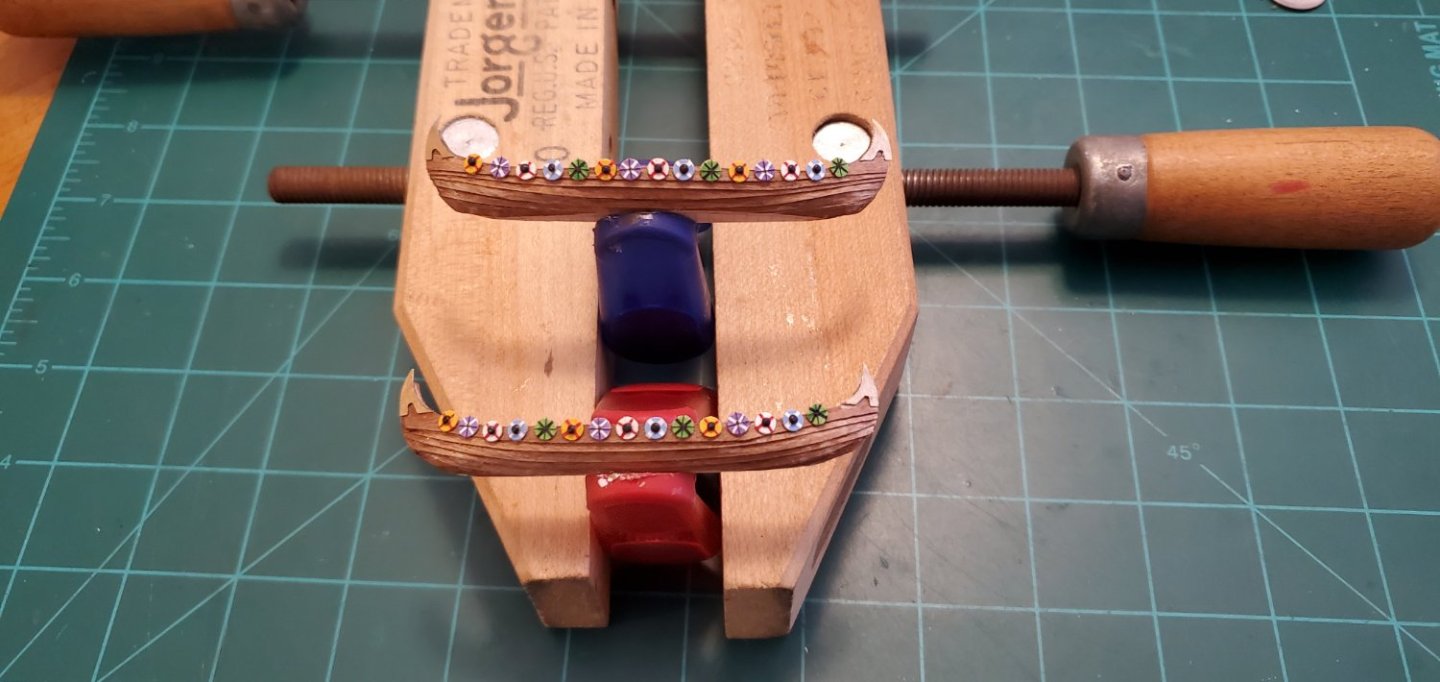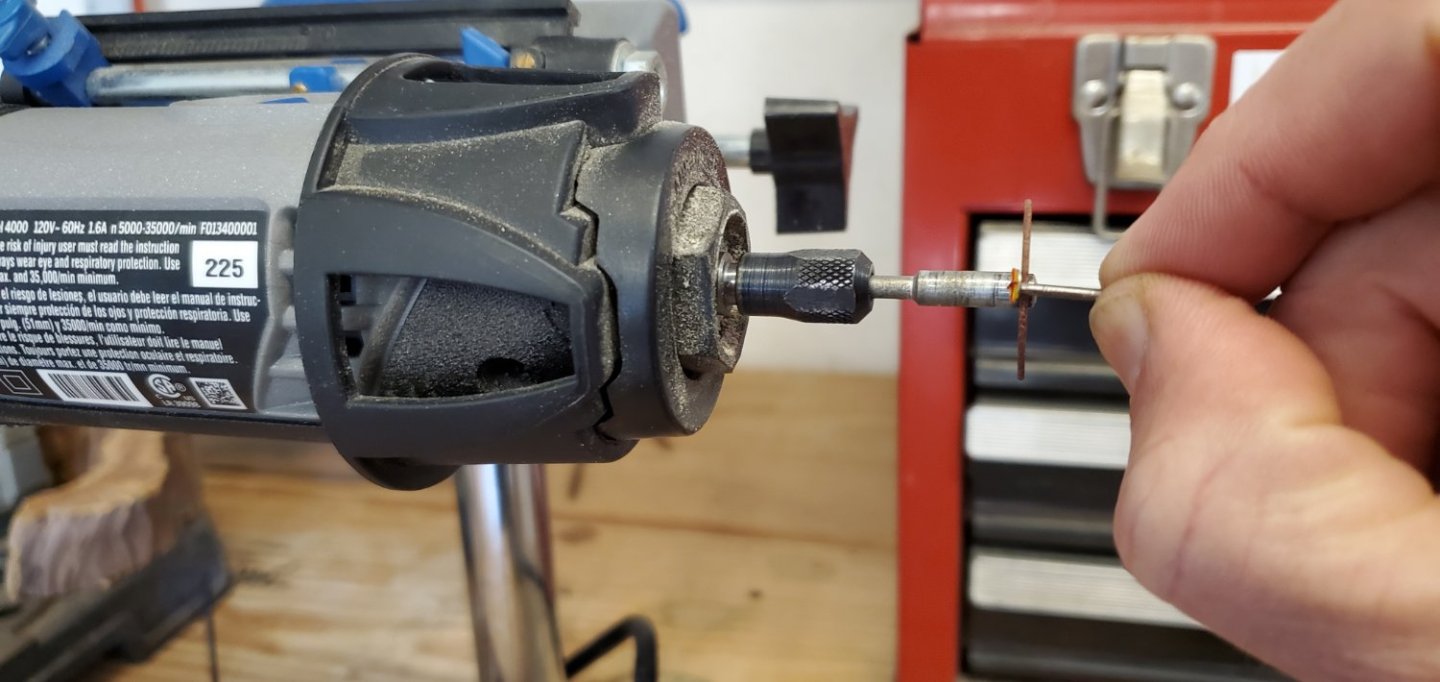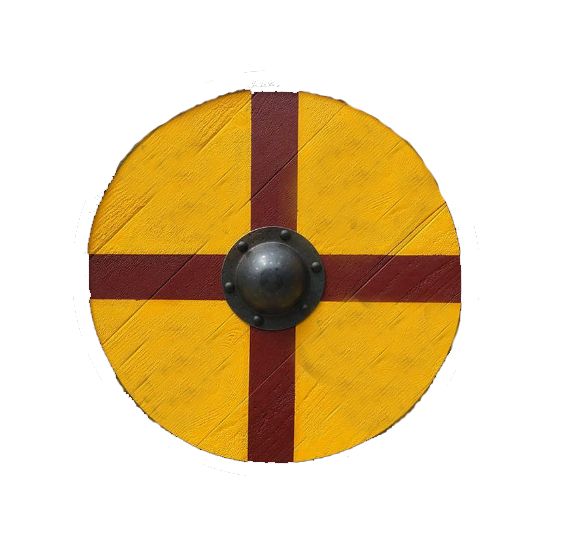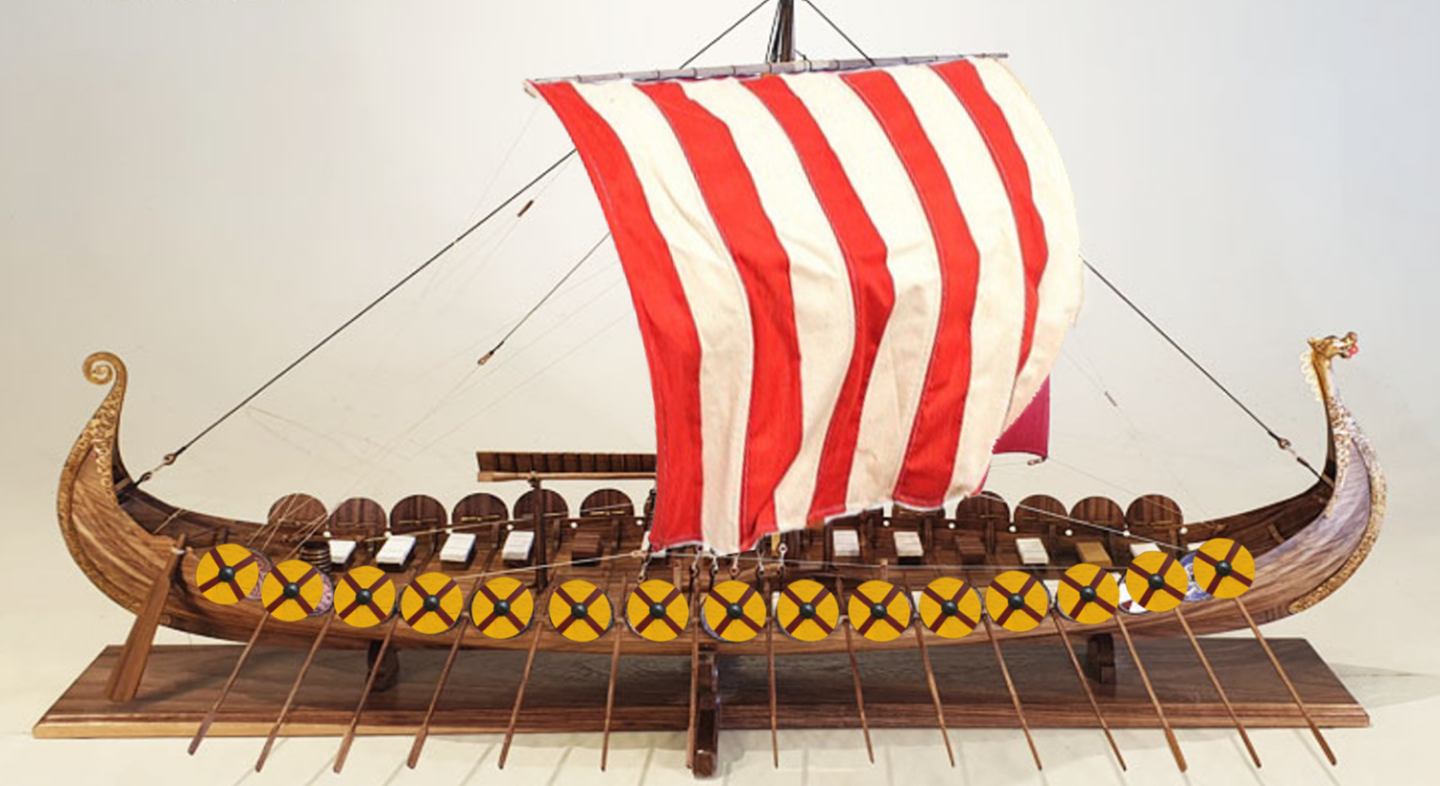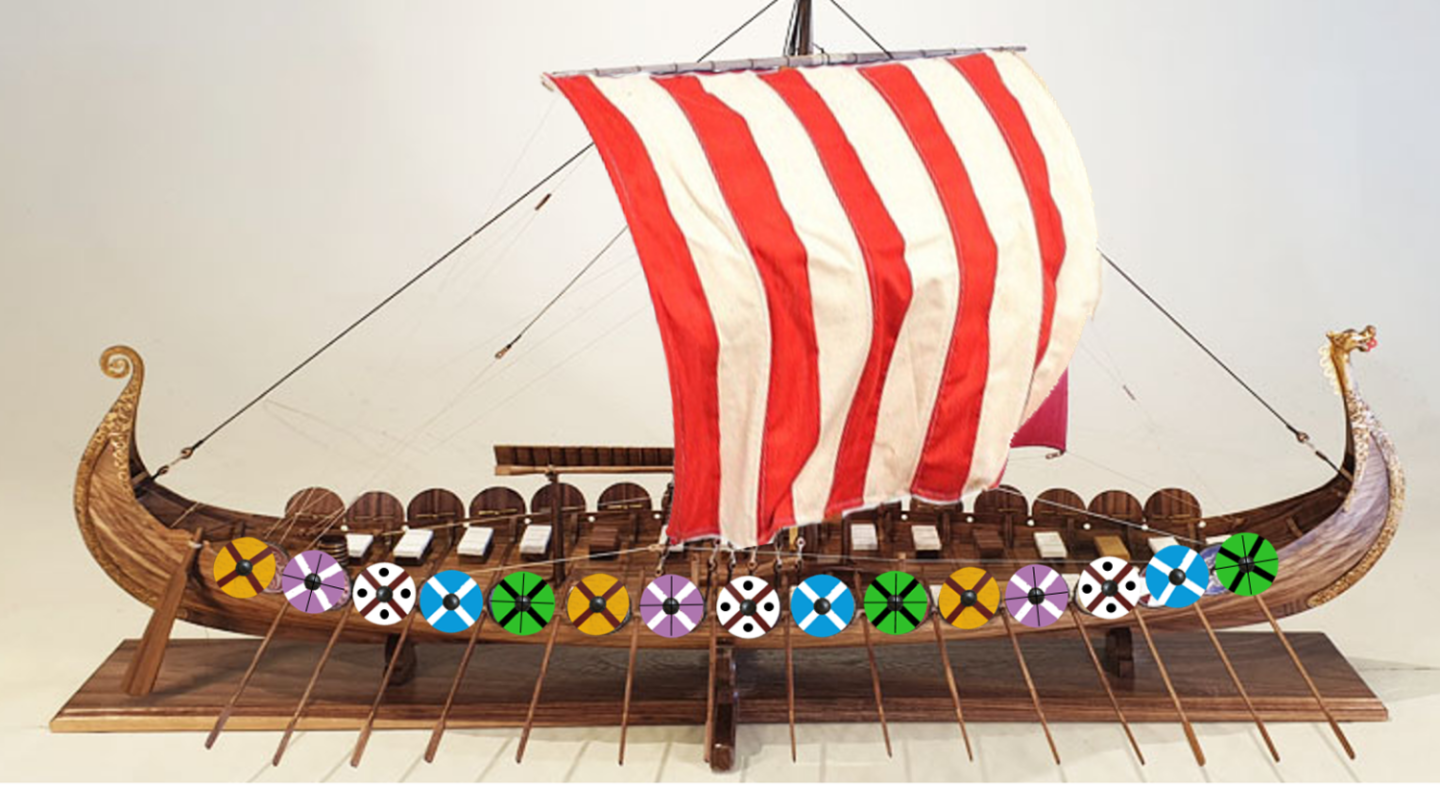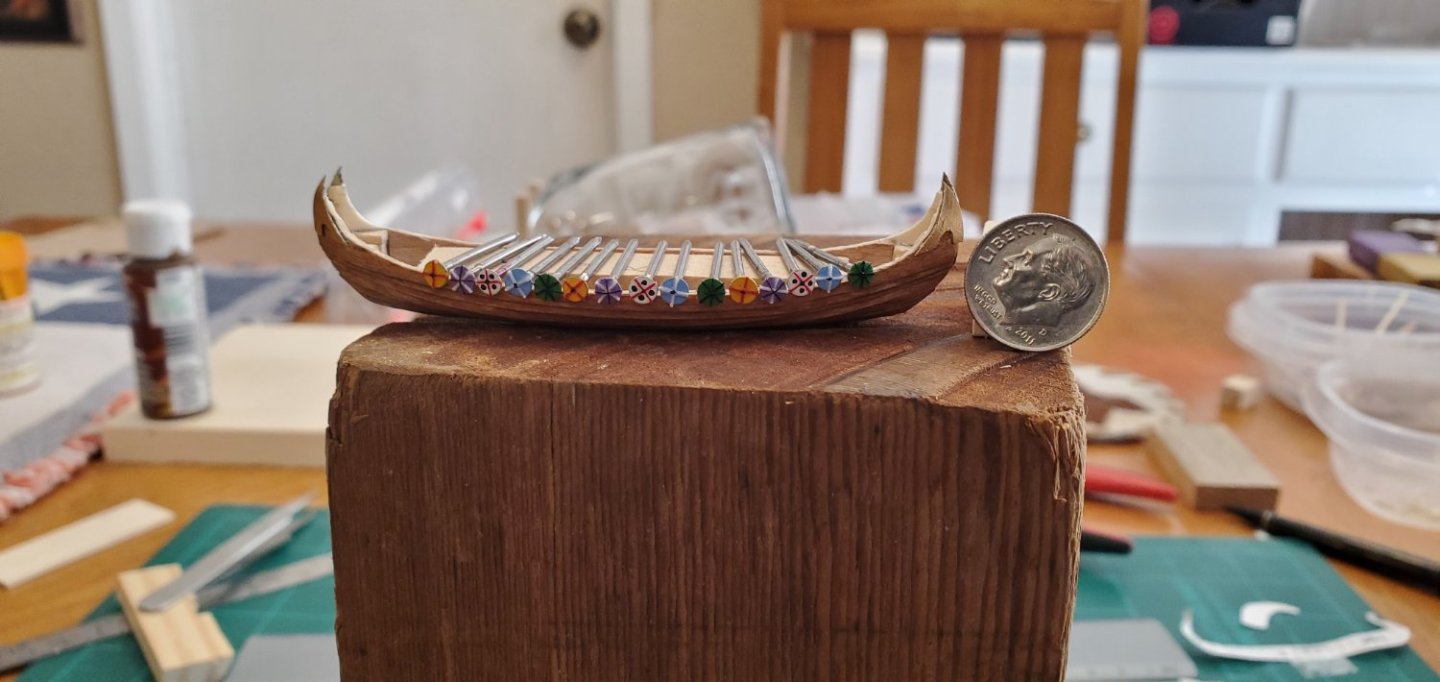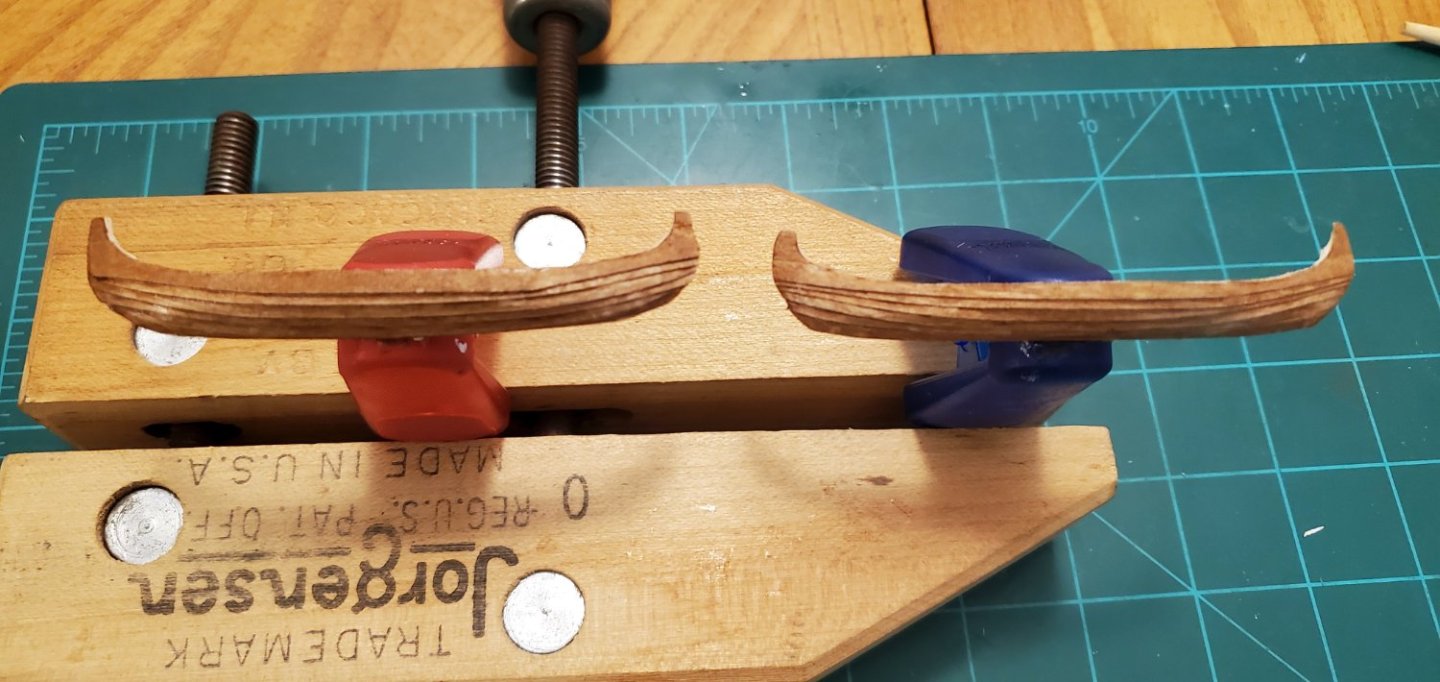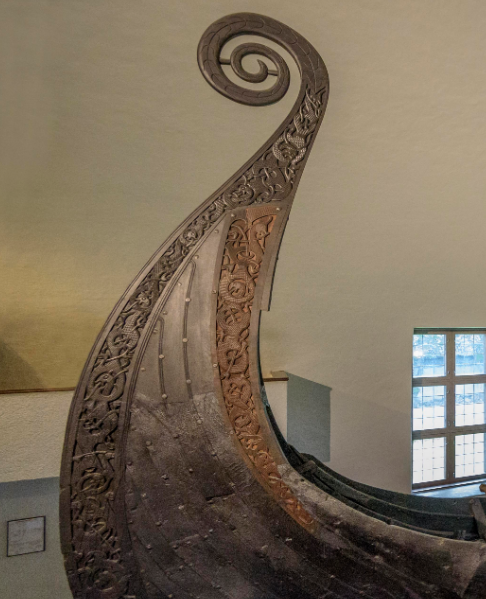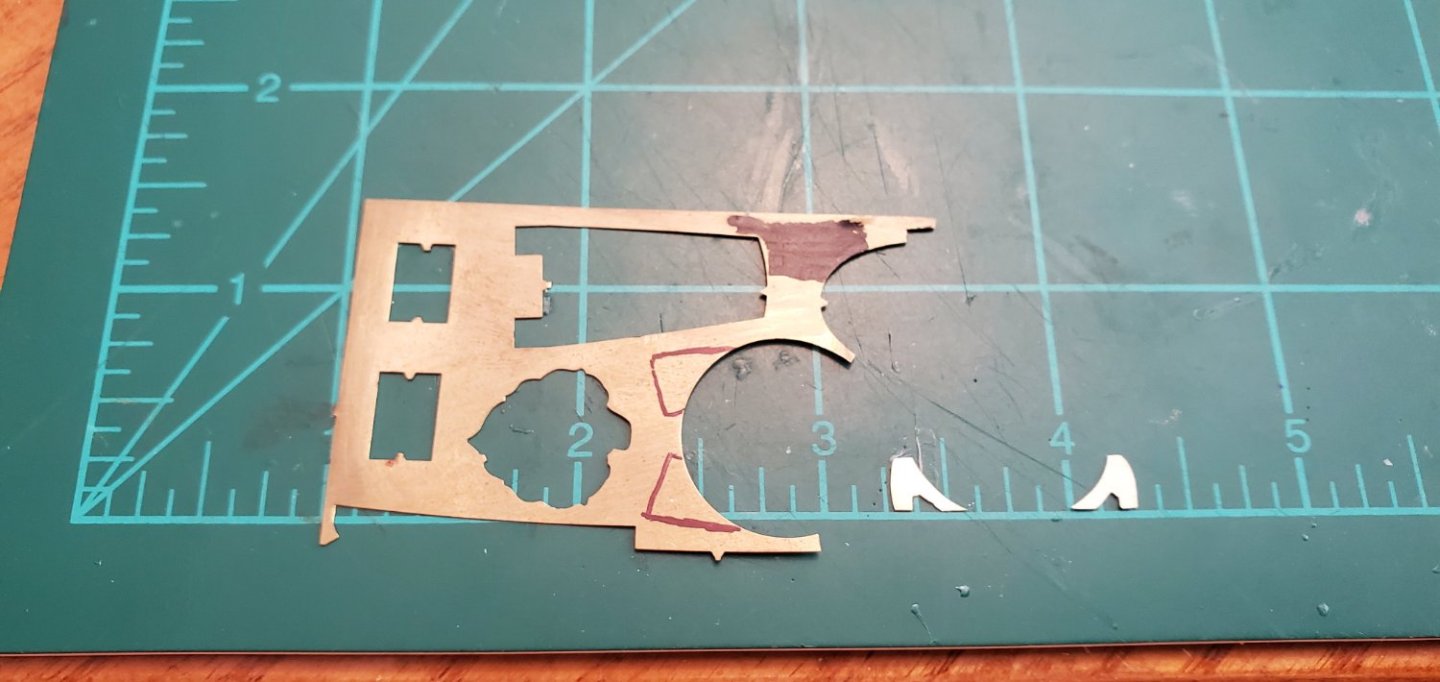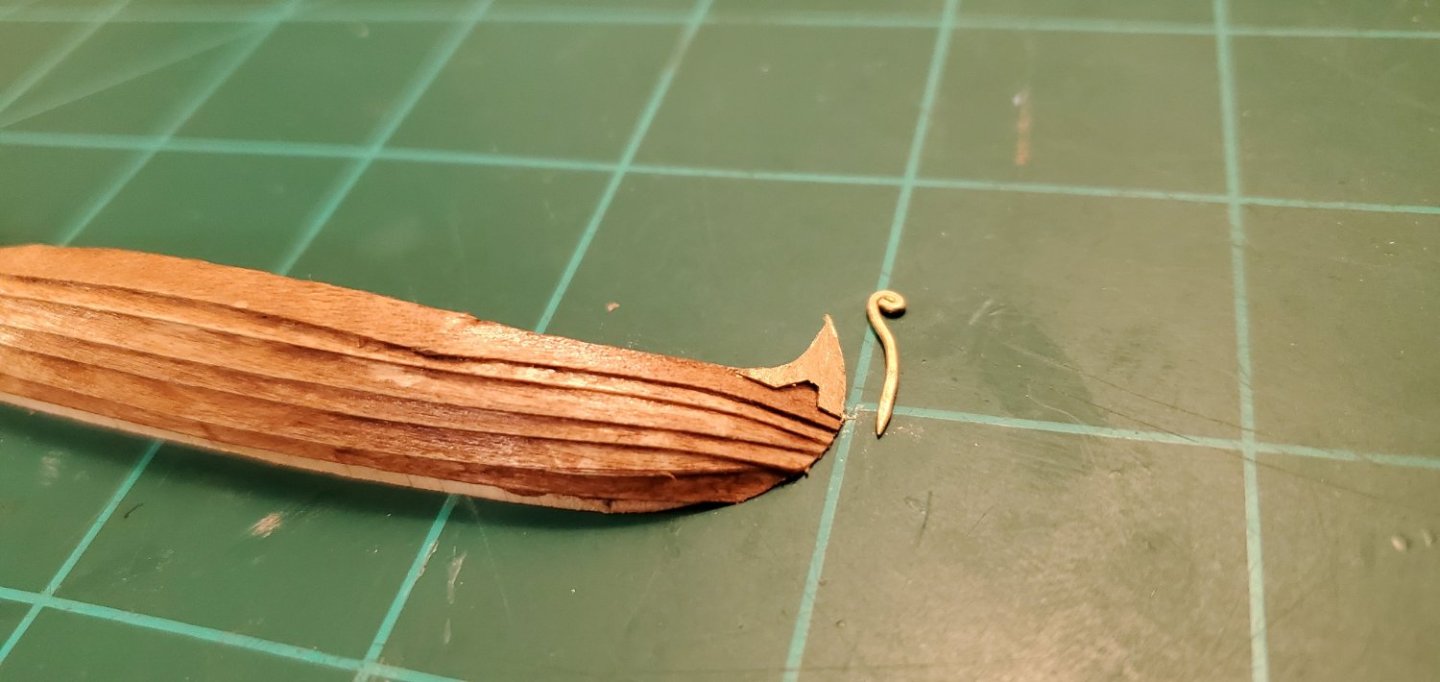-
Posts
1,956 -
Joined
-
Last visited
Content Type
Profiles
Forums
Gallery
Events
Everything posted by Glen McGuire
-
Very nice work, @modeller_masa!! Looks like you figured out a rigging plan that will work. It also looks like you have 3 pull threads, which is interesting. I only had 2 when I did mine. Here's what my Hannah rigging looked like.
-
And BTW, I like how Marvin the Martian shows up every now and then to inspect your work! He looks very demanding.
-
You are right again, Steven. I quickly realized the difficulty you describe after doing a few practice punches. So I took a hi-tech approach and used a sharpie to mark to mark the tip of the punch at 0, 90, 180, and 270 degrees to line up with my crosses. Once I did that it was a breeze!
-
Looks great - especially the sewing job on the sails! Your first mate deserves a promotion! Regarding the water, please avoid my Hannah build log for ideas. You do NOT want to try what I tried. Epic fail. My preference now is epoxy resin for the water's base with a touch of acrylic paint dabbed on top (after the epoxy dries) for texture. If you look at page 5 of my build log for the Independence (link in my signature below) you can see some pictures of what I do with the resin and acrylic paint. The resin also works well for just a thin layer of water. See my build log for Zheng He's Treasure Fleet for an example. My bottle for that build had 3 bulbs and the resin was a different thickness in each, and super thin between 2 of the bulbs.
-
First of all, a big thank you to @Ian_Grant, @Knocklouder, @Louie da fly, @Landlubber Mike, @Roger Pellett, @Keith Black, @gjdale, @mtaylor for all of your comments and suggestions on my shield manufacturing process. Since I was so far down the path, I was committed to finishing the shields up by cutting off the nail heads with my Dremel and then deburring. As predicted, lots of curse words followed - but not for a reason I anticipated! The good news was that the Dremel did not fling nail heads hither and yon. The bad news was that cutting off the heads generated so much heat it bubbled the paint right off. So much for all my hours of careful artwork! 😠 😠😠 and #@$%#!! x 100. Back to the drawing board and a review of everyone’s suggestions. The one that really grabbed my attention was the hole punch suggested by Landlubber Mike. It made me remember that I had an adjustable leather punch that I’d bought probably 30 years ago to make a leather wrap for a set of longhorns I got in San Antonio. Based on Mike and Roger's suggestions, I thought the leather punch might work on some thin (1/64”) maple veneer that I’ve got. I tried it and it punched out perfect little circles the perfect size! Using the maple veneer also provided several advantages over the nail heads. First, I could now make the shields out of wood, like the original Viking shields. I do prefer to make as many part out of original-type material as possible. Also, with a nice flat sheet of veneer, I figured I could use pinstriping tape to paint the thin lines for the crosses rather than gluing on bulky thread. Second, I could now make a real boss for the center of the shield rather than just painting a black dot on top of the thread as I had done before. My tiny brass nails were a good size for the boss. Third, the thin veneer should be easier to glue to the ship’s gunwales. So even though I had to pitch all my previous work in the trash and start all over, I was confident this process would be easier and produce better looking, more authentic shields. For the process, I swabbed paint for the 5 shield colors on the veneer. After it dried, I laid out the pinstriping tape and painted the crosses. Next was drilling holes for the brass nail bosses. The brass nail heads were a bit taller than I wanted, so I filed them down and squared them off just a tad. Then I used the leather punch and cut out all the shields. For the green and blue shields, I added the extra thin lines with super thin fly-tying thread. It’s so thin, it’s almost indistinguishable from paint to the normal eye. The last step before attaching to the ship was cutting off the brass nail shanks flush. The pictures below illustrate the main steps of the process. And here’s the new shields mounted on the 2 halves of the hull.
-
I've been using cuticle trimmers to flush cut thread but they don't work on metal. I need to get a jeweler's flush cutter. Keith, great walk-thru of your ratline process. As with the rest of your build, very clean and crisp. Beautiful work!
-
Probably! But unfortunately I did not think of that. ☹️ If I end up flinging my painted shields all over the garage this week, I may try that. Wouldn't be the first time I started something completely over!
-
Het Steven, I actually considered that but could not figure out a way to hold the tiny, flat head secure enough for me to decorate it. No easy answer! I've already spent hours decorating the shields so I just gotta put my head down and git r done!
-
That is a very insightful question, Ian. The answer is yes, but it ain’t easy. I did a practice run on a spare, using a sideways mounted Dremel and cutoff wheel. The first challenge was getting the nail head completely off without the spinning Dremel flinging it into the far reaches of my garage never to be found again. The 2nd challenge was getting the back of the shield deburred so it will lie smooth against the gunwale. With 30 of these things, it’s gonna be a long and tedious process. I predict lots of curse words to follow.
-
I think I do these build logs just so I can see where y’all will take the conversation. Would never have guessed Monty Python, but here we are thanks to Mark! Trying to get the thought of canoes out of my mind, it’s on to another iconic feature of Viking longships – the colorful shields mounted on the gunwale. I searched around and found a shield I liked, which was a yellow background with a red cross (1st pic). The 2nd pic is an idea of the ship's look with all shields in place. For my shields, I found a batch of small nails in the garage that I thought would work. They are ¾” long with a head that is 1/8” diameter. So I painted all the nail heads yellow. While waiting for them to dry, an annoying friend came over and told me it was boring to make all the shields the same color and the same design. I call her annoying because, of course, she was right. Sigh. We did some searching and sure enough, we found few examples of Viking longships with uniform shields, and they were indeed boring. Ugh. More confirmation she was right (at least I was smart enough not to argue with her). So long story short, we picked 5 different colors and decided on some simple designs that I thought I could pull off on a 1/8” canvas. Here’s the artist’s rendition of what it will hopefully look like. After scraping the yellow paint off my previously painted nail heads and repainting them, the real fun began. How to get the lines for the crosses drawn on each shield. First, I tried dipping thread in paint and laying it across the nail head. Epic fail. The thread made nice straight lines but I could not get uniform thickness. Next, I tried painting the lines with a fine tip brush. The results were like Steven, a.k.a. @Louie da fly, described Fosters Lager – ghastly. So I took a page from my previous Morgan build where I glued on white thread for pinstriping. The results were passable I think, at least from a distance anyway. Here’s the array of 15 shields for the port side of the ship.
-
You are off to a great start, Bob!! And now I see clearly that you have the true palindrome Hannah on the transom!
-
Wonderful work on both ships, Bob. I love the clamshell nameplates. Very creative!!
- 179 replies
-
- Second Build
- Pinta
-
(and 2 more)
Tagged with:
-
Congrats on the accomplishment, Ian! That gives you more cuss words in the bank that you can use later! What are you using for the ply skin and how thick is it?
- 536 replies
-
- Quadrireme
- radio
-
(and 1 more)
Tagged with:
-
Hmmmmm. That's a very interesting idea. I might be able to solder a couple of small bits of wire to the middle of the eye pin's shaft where they could act as sort of an axle which would allow me to lay it down and then flip it back up. I'm gonna play around with that. Thanks for the suggestion, Keith.
-
I agree, Ian. The body of the bottle is not wide enough for me to to flip the ship around once it's inside, so attaching the curlique thingy to the sternpost will have to occur at the very back of the bottle. Fun awaits!!
-
That is so awesome! What a great gift and keepsake this will be for your niece. The first SIB I did from scratch I chose the Charles W Morgan because my friend that gave me the bottle was named Morgan. But I was selfish and kept the project for myself after I finished it rather than giving it to her! I am glad you are doing a build log as you go. I'm really looking forward to watching your work, Bob!
-
Reluctantly putting aside the far more interesting topics of animals and alcohol, it's back to the ship. I finished shaping the 2 halves of the hull and then stained them with an oak-colored gel stain. Next, I wanted to do something to resemble the Oseberg's metallic, ornamental edging on the stem post and stern post. I dug around in my pile of leftover brass sprues and found a couple of pieces that had a curve matching the upsweep on the stem/stern posts. So I cut those to fit. The curlicue thingy at the top (proper historical term no doubt) makes the whole assembly too tall to fit thru the bottle opening, which means it will have to be attached inside the bottle. So far, the only thing I've been able to come up with to simulate the curlicue is a 1/32" brass eye pin with the shaft curved to shape and the eye squeezed into as tight a curl as I possibly could. I may revisit that at some point later if I can come up with a better idea. I keep reminding myself that at this scale, the goal is really a reasonable impression of something rather than an exact replica.
-
By the way, I did not realize till a couple of days ago that you had posted a question at the end of my Zheng He Treasure Fleet build log a while back. Not sure if you found a suitable answer yet, but I went ahead and answered your question regarding adding waves on top of epoxy resin. Here's a link to the last page of that log where you can scroll down to the bottom and see my explanation. Hope it helps. Happy to answer any other questions you may have. https://modelshipworld.com/topic/32318-zheng-hes-treasure-fleet-by-glen-mcguire-–-finished-bottle-11000/page/7/ Also BTW, I am fascinated by your use of a 3D printer for this stuff!
-
That's funny! Same thing goes for the Lone Star Beer mentioned in my first post. Great name, horrible beer.
-
Hey Tom! Welcome to the best forum on the whole internet!
About us
Modelshipworld - Advancing Ship Modeling through Research
SSL Secured
Your security is important for us so this Website is SSL-Secured
NRG Mailing Address
Nautical Research Guild
237 South Lincoln Street
Westmont IL, 60559-1917
Model Ship World ® and the MSW logo are Registered Trademarks, and belong to the Nautical Research Guild (United States Patent and Trademark Office: No. 6,929,264 & No. 6,929,274, registered Dec. 20, 2022)
Helpful Links
About the NRG
If you enjoy building ship models that are historically accurate as well as beautiful, then The Nautical Research Guild (NRG) is just right for you.
The Guild is a non-profit educational organization whose mission is to “Advance Ship Modeling Through Research”. We provide support to our members in their efforts to raise the quality of their model ships.
The Nautical Research Guild has published our world-renowned quarterly magazine, The Nautical Research Journal, since 1955. The pages of the Journal are full of articles by accomplished ship modelers who show you how they create those exquisite details on their models, and by maritime historians who show you the correct details to build. The Journal is available in both print and digital editions. Go to the NRG web site (www.thenrg.org) to download a complimentary digital copy of the Journal. The NRG also publishes plan sets, books and compilations of back issues of the Journal and the former Ships in Scale and Model Ship Builder magazines.

